There are so many different rifle cartridges that there is no tangible reason to add expense and trouble by working with a wildcat, but the intangibles attract us.

The anticipation in planning, the excitement in rounding up all the necessary dies and other equipment and the pleasurable expectation of how the round will perform cannot be measured. The fact is, making loads for any first-time cartridge is satisfying and fun.
While there may be no logical reason to work with a wildcat, the desire to do so is usually preceded by attempts to justify it in one’s mind. In my case, in necking the .270 WSM down to 6.5mm was a hope for lighter recoil, greater accuracy and possibly better ballistics at long range. I have been shooting the .270 WSM a lot and have absolutely no complaint with it. We all know, however, that the 6.5 and 7 metrics are reported to have some “mystical ballistic advantage” that allows them to fly flatter and deflect less in the wind. This is known because some magazine articles tell us so. It is true that .270s are not being outfitted with an abundance of competition-class bullets. The 6.5 and 7mms are used in long-range matches, as well as the .30s, but not the .277. I wondered if I could get better accuracy in a new 6.5 rifle and see if there was some real ballistic advantage in the long, sleek 6.5 bullets so popular today in the 6.5-284 Norma, .260 Remington, 6.5 Grendel and 6.5 Creedmoor.
The basic WSM cartridge in a short action has a lot going for it. In my experience, the sharply angled, larger shoulder surface area of the WSM efficiently retards the forward movement of powder granules during firing. The deep bullet seating required in the WSM setup delays bullet base exit from the case mouth. The short, fat powder column ensures more of the powder is ignited initially. It all combines to cause a better propellant burn before the base of the bullet passes a rifle’s throat, blasting it with partially burned and unburned granules.
This story is from the Special Edition Fall 2019 edition of Rifle.
Start your 7-day Magzter GOLD free trial to access thousands of curated premium stories, and 9,000+ magazines and newspapers.
Already a subscriber ? Sign In
This story is from the Special Edition Fall 2019 edition of Rifle.
Start your 7-day Magzter GOLD free trial to access thousands of curated premium stories, and 9,000+ magazines and newspapers.
Already a subscriber? Sign In
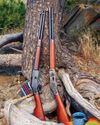
CIMARRON .32-20 Short Rifle & Carbine
In the heyday of Winchester Repeating Arms Company lever guns, it offered muskets, standard rifles, short rifles and saddle ring carbines.
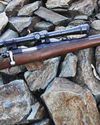
Remington's Model 722 and .222 Cartridge
It's easy enough to define what a varmint is, those pesky critters that tear up pastures, flower beds and all kinds of expensive crops people need for various reasons - most importantly, to make a living and/or something with which to feed themselves.

Coyote Bullets
What is Best for You?
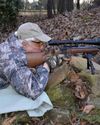
Remington's 5mm Rimfire Magnum
Shooting a Classic
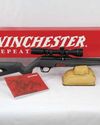
Winchester's New Wildcat
The Ultralight Rimfire Varmint Rifle

.223 Remington from .30-30 Winchester?
Multitasking for Varmints

LOADS FOR A .22 TCM
The .22 TCM first appeared commercially in 2012, chambered in a Rock Island Armory 1911-style handgun.
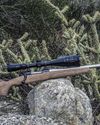
Everybody Loves Velocity
The 4,500-fps WSSM Project

A BOLT-ACTION FRANCHI 224 VALKYRIE
Testing New Loads
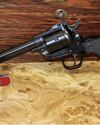
.22 Winchester Magnum Rimfire
Shooting Revolvers